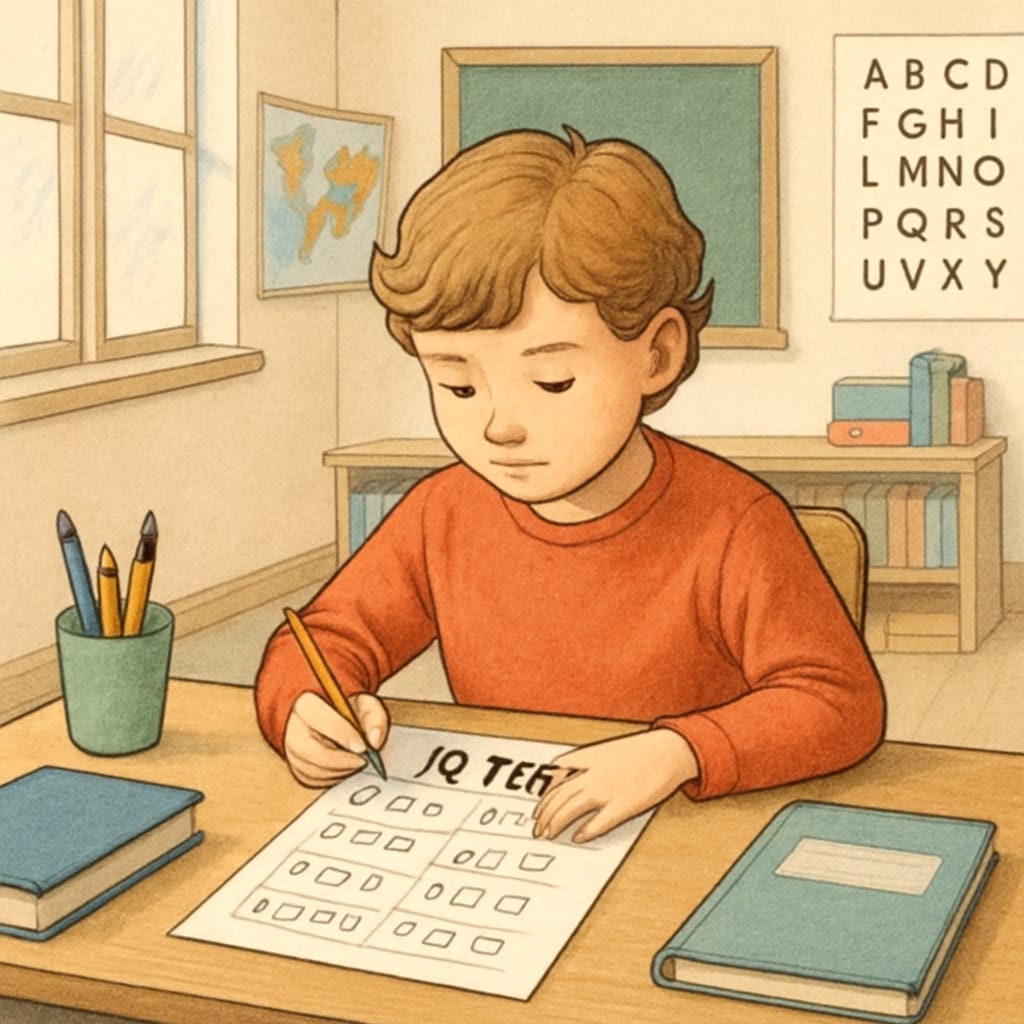Identifying and nurturing the potential of gifted children begins with understanding their unique abilities. An essential part of this process is the use of IQ tests as a reliable assessment tool. Recognized as one of the most effective methods to evaluate intelligence and cognitive skills, IQ tests play a pivotal role in determining a child’s giftedness. In this article, we will explore the most authoritative IQ test standards, including the Cognitive Abilities Test (CogAT), Wechsler Intelligence Scale for Children (WISC), and Stanford-Binet Intelligence Scales, to guide parents and educators in making informed decisions.

Understanding IQ Tests: What Makes Them Ideal for Gifted Child Evaluation
IQ tests are designed to measure a range of cognitive abilities, such as reasoning, problem-solving, and abstract thinking. For gifted children, these tests provide valuable insights into areas of strength and potential areas for development. However, not all IQ tests are created equal; each has its methodologies and focuses that make it suitable for specific scenarios.
Three widely recognized IQ tests used in gifted child assessment include:
- CogAT (Cognitive Abilities Test): This test measures reasoning abilities in three domains: verbal, quantitative, and non-verbal. It is particularly useful for identifying advanced problem-solving skills in young learners.
- WISC (Wechsler Intelligence Scale for Children): The WISC assesses a broader spectrum of intellectual abilities, including processing speed and working memory. It is widely used in diagnosing giftedness and learning disabilities.
- Stanford-Binet Intelligence Scales: A classic in the field, this test evaluates fluid reasoning, knowledge, quantitative reasoning, visual-spatial processing, and working memory. It has been a cornerstone in intelligence testing for over a century.
Each of these tests offers a unique lens through which to view a child’s intellectual potential, making them indispensable tools in modern education.
Key Features of CogAT, WISC, and Stanford-Binet: A Comparative Analysis
To choose the right test for a gifted child, understanding the key features of each tool is essential. Below is a comparative analysis of the CogAT, WISC, and Stanford-Binet to help parents and educators make an informed decision:
| Test | Age Range | Focus Areas | Best Suited For |
|---|---|---|---|
| CogAT | Kindergarten to 12th Grade | Reasoning (Verbal, Quantitative, Non-Verbal) | Identifying advanced problem-solving and reasoning skills |
| WISC | 6 to 16 years | Broader intellectual abilities, including processing speed and working memory | Comprehensive evaluation of intellectual strengths and weaknesses |
| Stanford-Binet | 2 to 85+ years | Fluid reasoning, knowledge, quantitative reasoning, visual-spatial processing, working memory | Providing a detailed intellectual profile |
For example, the Stanford-Binet test is highly regarded for its versatility in evaluating individuals across a wide age range, while the WISC is often preferred for its focus on school-aged children.

How to Choose the Right IQ Test for Your Gifted Child
When selecting an IQ test, it is essential to consider the following factors:
- Child’s Age: Ensure the test aligns with your child’s developmental stage to gain accurate insights.
- Specific Needs: If your child shows strengths in specific areas, choose a test that emphasizes those domains. For instance, the CogAT is excellent for reasoning skills.
- Testing Environment: Some children perform better in structured environments, while others may thrive in less formal settings. Understanding your child’s preferences can help ensure reliable results.
In addition, parents and educators should consult trained professionals to interpret test results accurately and devise strategies for nurturing the child’s abilities. For more detailed information on how IQ tests work, visit this resource on IQ tests.
The Role of IQ Tests in Shaping a Gifted Child’s Future
IQ tests are not just tools for assessment; they serve as a foundation for tailored educational plans. By identifying a child’s strengths and areas for improvement, these tests allow educators and parents to provide targeted support. For instance, a child excelling in quantitative reasoning may benefit from advanced mathematics programs, while another with strong verbal skills might thrive in creative writing workshops.
However, it is crucial to remember that IQ tests are only one part of the puzzle. A holistic approach that considers emotional intelligence, creativity, and social skills is equally important in shaping a gifted child’s future.
In conclusion, understanding the right IQ test for your gifted child can unlock their potential and set them on a path to success. By leveraging tools like CogAT, WISC, and Stanford-Binet, parents and educators can make informed decisions that align with the child’s unique abilities and aspirations.
Readability guidance: Each section is structured with concise paragraphs, lists, and examples to ensure clarity. The article balances technical details with accessible language to engage both professionals and parents.


